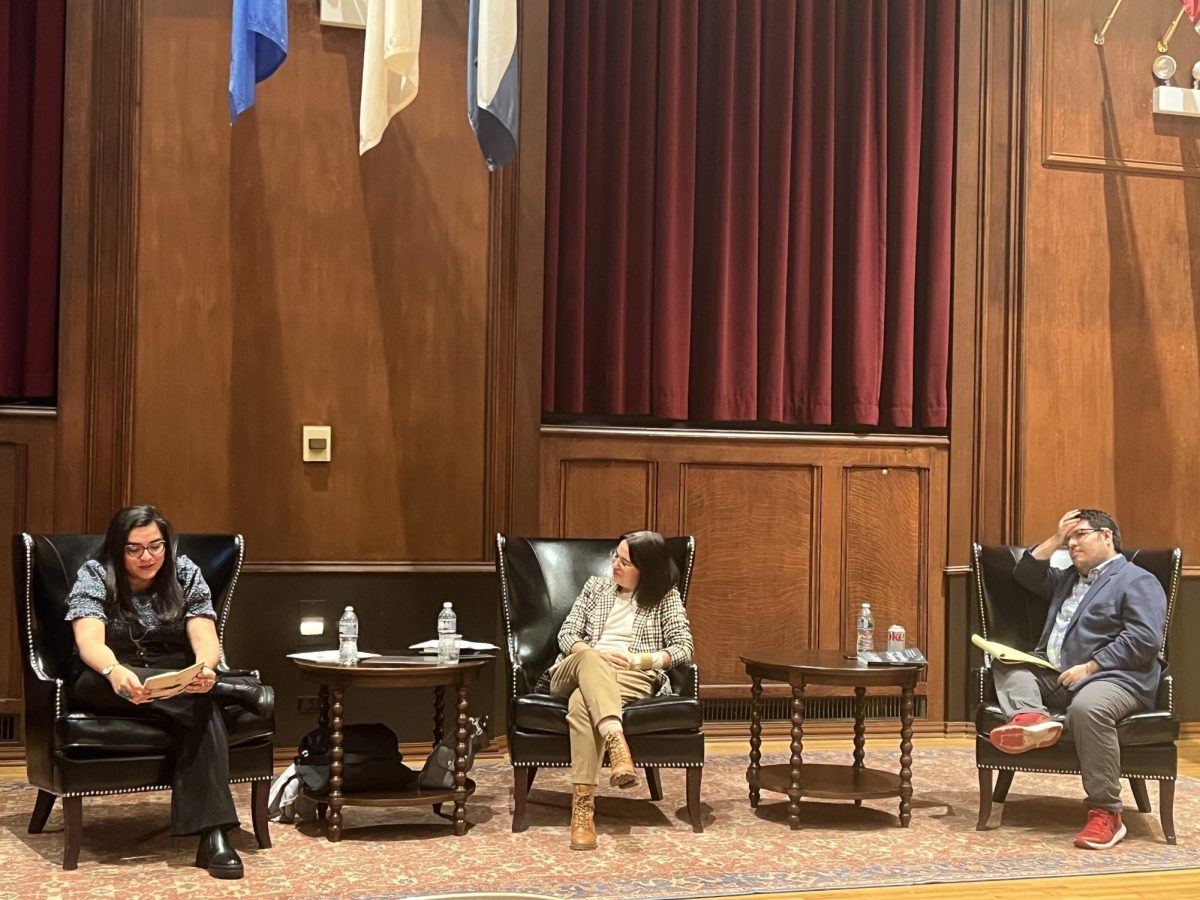Professor Alejandra Díaz de León discussed her new book Walking Together: Central Americans and Transit Migration Through Mexico on November 8. Díaz de León is an assistant professor in Migration and Violence at the Center for Sociological Studies at El Colegio de México.
“What I want to show in this book is [that] even in extremely difficult situations, people still have very rich social lives,” she said. Walking Together is an ethnographic study of social networks, trust, and solidarity between migrants in transit.
The talk was moderated by Chiara Galli, an assistant professor in the Comparative Human Development Department, and Ramón Garibaldo Valdéz, a provost’s postdoctoral fellow in the Political Science Department.
Díaz de León’s book addresses two main questions: How do Central American migrants survive their journey through Mexico without help from their traditional social networks? Can new social networks, trust, and cooperation form in an environment of scarcity, violence, and uncertainty?
Díaz de León’s research showed that migrants form social ties in three ways. First, they form migrant families, which consist of migrants often with a shared characteristic who left their home countries together but are not necessarily related by blood. Second, they form road families, which are small groups of mostly male migrants who meet on the road, especially near Mexico’s southern border. Finally, there are transient communities of migrants who share resources and information. Contrary to her expectations, Díaz de León found that migrant families tend to fare less well.
“[Migrant] families—[be it] queer, straight, all-male—tend to isolate themselves from the rest of the migrant community because they are already together, [and] that proves to be the wrong strategy because they need observations [and] reliable information, and they cannot get [that] if they are isolated from other [migrants],” she said.
Reliable and up-to-date information is crucial for migrants navigating the complex and dangerous routes to cross Mexico. “People [that migrants meet] on the road have very fluid identities,” Díaz de León said. “Migration agents can be working for gangs; storeowners may overcharge you or rob you. There are people who pretend to be migrants but are actually kidnappers.”
Gossip is an important source of information for migrants, especially before the pandemic. During the pandemic, shelters started allowing migrants to use mobile phones, which facilitated the instant exchange of information via messaging platforms.
Beyond sharing information, migrants form social ties to fulfill their emotional needs. “They want to be seen [as humans] on the road. [Being on the road] dehumanizes them, [it] makes them feel like they do not matter, no one will care if they die [because] their families and loved ones are not there. They [do not feel like] complete humans once they start crossing,” Díaz de León said.
“It is very hard to not internalize dehumanization [when migrants are] hauled [like] cattle sometimes into detention centers,” Garibaldo Valdéz said. “[But] it is possible to create communities [and] there is something very powerful about the fleeting moments of intimacy. Some of it is strategic [but] that’s not how human beings work—we also crave love.”
“People are not merely surviving, they’re still social beings while migrating,” Díaz de León said.
The discussion focused on the role played by the Mexican and the American governments in creating these obstacles to migration through Mexico. “The billions of dollars of investment by the U.S. government [were made] with the goal of building up [Mexico] to serve as a buffer to stop the poor from [entering the U.S.],” Galli said. She noted that the North American Free Trade Agreement also helped to extend the Mexico-U.S. border such that Mexico’s southern border effectively functions as an additional barrier to prevent migrants from entering the U.S.
The panel also discussed the possibility of political mobilization of migrants. “This [sense of] belonging in the transient community [does not just] last on the migrant trail. There’s the potential for this identity to become a political identity and even lead to political mobilization,” Galli said. However, she is skeptical as to how long this shared identity will last after the migrants enter the U.S. and are no longer classified as migrants in transit, as they may be pitted against one another in the process of applying for documentation.
Díaz de León hopes to provide some insight on this with her next project. “[It will examine] how migrants relate to each other and form small political identities to demand rights and protest,” she said.








